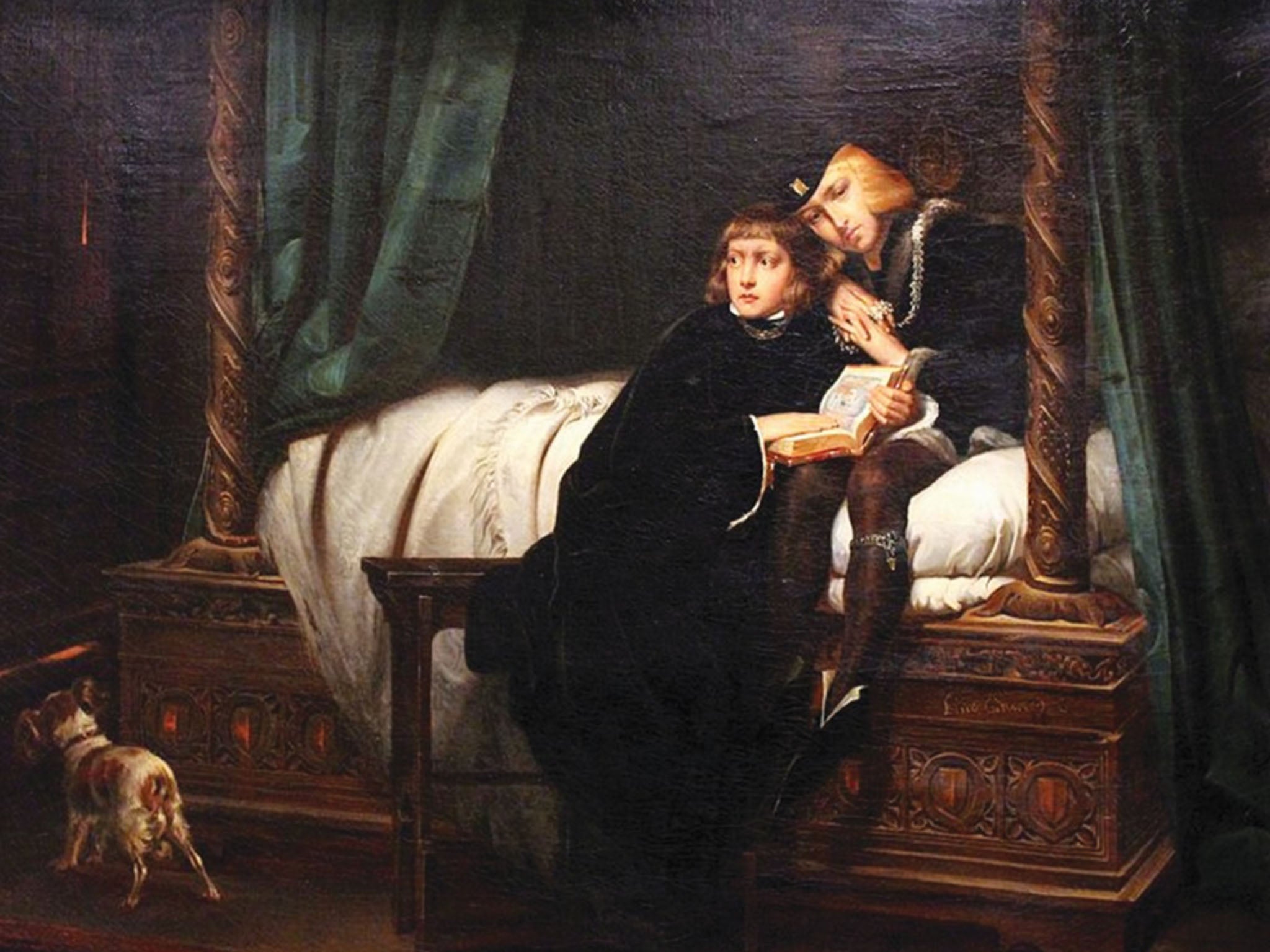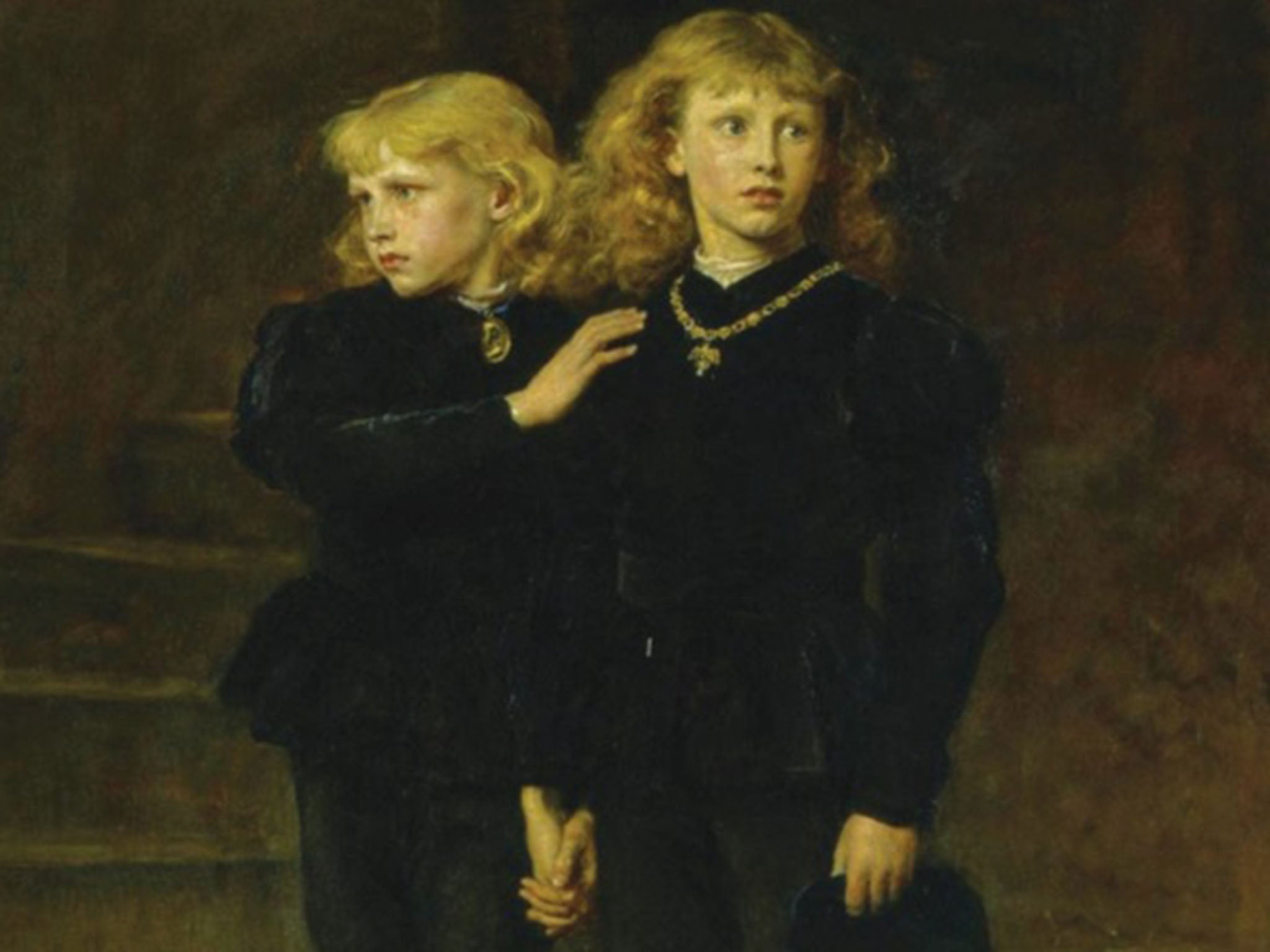New DNA sample could prove whether Richard III was guilty of murdering the 'Princes in the Tower'
Exclusive: Sample identifying direct descendant of the Princes in the Towers’ maternal grandmother could solve centuries-old mystery
Your support helps us to tell the story
From reproductive rights to climate change to Big Tech, The Independent is on the ground when the story is developing. Whether it's investigating the financials of Elon Musk's pro-Trump PAC or producing our latest documentary, 'The A Word', which shines a light on the American women fighting for reproductive rights, we know how important it is to parse out the facts from the messaging.
At such a critical moment in US history, we need reporters on the ground. Your donation allows us to keep sending journalists to speak to both sides of the story.
The Independent is trusted by Americans across the entire political spectrum. And unlike many other quality news outlets, we choose not to lock Americans out of our reporting and analysis with paywalls. We believe quality journalism should be available to everyone, paid for by those who can afford it.
Your support makes all the difference.New scientific research could finally solve one of Britain’s most controversial historical mysteries.
Geneticists have succeeded in obtaining a sample of DNA that could ultimately prove whether the medieval English King Richard III was guilty or innocent of murdering the two children of his predecessor, Edward IV – the so-called Princes in the Tower.
The discovery of the crucial modern DNA is revealed in a new book, The Mythology of the ‘Princes in the Tower’, published this week.
Richard III – whose skeleton was discovered in Leicester just six years ago and whose identity was confirmed through DNA testing, was portrayed as a villain by Shakespeare and the Tudors.
But over the past hundred years, a number of historians have sought to rescue his reputation.
The new DNA evidence – obtained from a recently identified direct descendant of the Princes in the Towers’ maternal grandmother – could ultimately prove Richard’s guilt or innocence.
Inside Westminster Abbey is an urn containing bones, traditionally believed to be those of the two allegedly murdered princes. If a DNA test on that skeletal material were to match the modern “control” sample from the descendant, then the chances of Richard being guilty (either of murdering them or of incarcerating them until they died) would be substantially increased.
But if the Westminster Abbey material did not match the modern control sample, then it would mean that the remains were not the two princes – and therefore the traditional accusation of murder against Richard would remain unproven.
However, tests on the material are not likely to be carried out in the immediate future. The last time that the bones – found in the Tower of London in the 17th century – were examined scientifically was almost 90 years ago – long before DNA testing and radiocarbon dating techniques existed.

In more recent decades, the Abbey has been asked on several occasions to allow more modern tests but has always turned these requests down; decisions which have been confirmed by the Royal Household with the Abbey being a “royal peculiar” (a religious institution under the direct authority of the Crown).
A spokesperson for the Abbey said that the situation regarding test requests would remain the same “for the foreseeable future”.
However, there are other groups of bones, potentially belonging to one or other of the two princes, which could ultimately also be tested to see whether they match the descendant’s DNA sample.
If any of those tests proved positive, then Richard would be off the hook, for they would prove that at least one and potentially both the princes had died long after Richard’s own death.
Indeed, if one particular set of potential remains did match the modern descendant’s DNA, then it would put another English King – Henry VII, founder of the great Tudor dynasty, firmly in the dock.
For in 1495, a man claiming to be one of the princes (and thus, arguably, the rightful monarch) attempted to seize the throne from Henry VII. Henry denounced him as a fraud and claimed that he was an ordinary commoner from Flanders called Perkin Warbeck.
However, somewhat mysteriously, the would-be imposter (who claimed to be Edward IV’s younger son, Richard) was not immediately executed, but was instead allowed to live – under partial house arrest in the royal entourage.
The King’s unwillingness to execute him can only really be explained if “Warbeck” was indeed Prince Richard, for Henry was married to the prince’s sister.
However, Warbeck/Prince Richard managed to escape (or was allowed to escape) but was obviously then deemed too dangerous to keep alive. So, on his recapture, he was finally hung as Perkin Warbeck at Tyburn in London. Nevertheless, there is still controversy as to whether the man hung there was Warbeck/Prince Richard or an unfortunate substitute.
Any DNA tests that match Warbeck/Prince Richard with the modern sample might solve the mystery.

The problem is that during World War II, the Luftwaffe bombed the medieval ecclesiastical building (London’s Dutch Church) where Warbeck/Prince Richard was buried – and the church was rebuilt after the war. Some of the church’s many buried skeletons were at that stage exhumed and cremated and are now kept in containers on the premises.
However, some evidence suggests that only some of the church’s medieval skeletons were exhumed – and it is therefore possible that Warbeck/Prince Richard still lies buried there and could one day therefore be DNA tested.
In addition to the Westminster Abbey and Dutch Church potential remains, there are also possible remains at three other sites – Chelsea Old Church (one theory suggests that the elder prince, Edward, was buried there), St Mary’s Church, Eastwell, Kent (where a theory suggests that the younger prince, Richard, was interred) and Mechelen Cathedral in Belgium (where another theory suggests that Richard lies).
Future research may locate appropriate skeletal material at one or more of those three sites which could then be tested against the descendant’s DNA.
Researchers had for many years been unable to find any relevant living descendants of the princes’ family – but last year a British genealogical researcher called Glen Moran discovered that there was a crucial error in the records. Fresh research was therefore carried out and he succeeded in identifying a direct female line descendant of the princes’ maternal grandmother.
The descendant – an English opera singer by the name of Elizabeth Roberts – provided a DNA sample and scientists were then able to isolate her female line mitochondrial DNA.

In late medieval and Tudor times (and again more recently), there has been controversy over whether the Princes in the Tower were indeed legitimate princes. That is because some 15th and 16th century evidence suggests that their father, King Edward IV, had not been legally married to their mother.
The question of what happened to the two “princes” is one of English history’s greatest mysteries.
Uncovering the truth would shed important new light on a crucial era of England’s story. The critical dynastic and other political changes that occurred towards the end of the Wars of the Roses helped shape subsequent English, British and world history.
Those dynastic wars not only led to the birth of the Tudor dynasty (and much more centralised and more powerful political authority) but also, in a sense, to the Reformation, the English Civil War, the birth of Empire and the character of early modern and modern Britain.
The politics surrounding the Wars of the Roses, the two princes and the early attempts to topple the Tudors were ultimately crucial in helping to shape the country we live in today.
“The discovery of the descendant, and her decision to supply a sample of her DNA, have opened up significant avenues of investigation. The traditional narrative surrounding the so-called Princes in the Tower is deeply problematic – but this new DNA brings solving a number of key questions that much closer,” said Philippa Langley, the historical researcher who was responsible for successfully discovering the long lost grave of Richard III.
“For many years we thought that there were today no living female line descendants of the princes’ family, but just 18 months ago I succeeded in locating the 16 times great-granddaughter of their maternal grandmother, Jacquette of Luxembourg – and that has allowed us to obtain a modern sample of the mitochondrial DNA that the princes would have almost certainly also had,” said Glen Moran, the academic who carried out the crucial genealogical research.
That 16 times great-granddaughter of the Princes in the Tower’s maternal grandmother is the British opera singer Elizabeth Roberts, who was the soprano soloist during the lighting of the Olympic cauldron at the opening ceremony of the 2012 London Olympics.
She told The Independent: “My family’s connection to this fascinating story from medieval English history has come as a complete surprise.”
The new book The Mythology of the Princes in the Tower in which the DNA discovery is revealed was written by an Essex University historian, John Ashdown-Hill, who tragically passed away just a few months ago. It is being published later this week by the Gloucestershire-based UK publisher Amberley Books.

Join our commenting forum
Join thought-provoking conversations, follow other Independent readers and see their replies
Comments